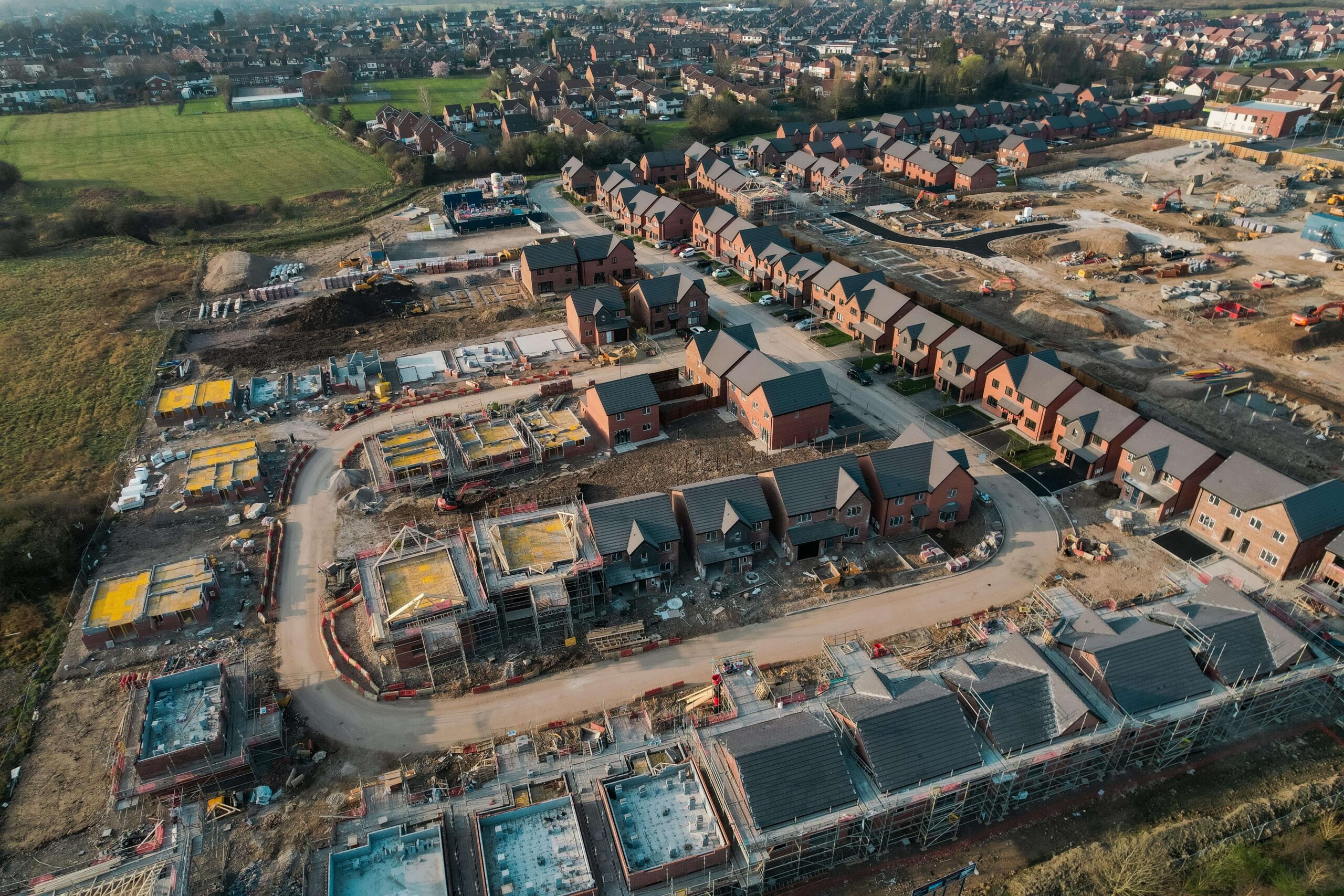Commercial Lending February blog
In this month’s Commercial Lending blog, Gareth Davies, head of business development for Commercial Lending at Hodge gives insights on the challenges and solutions in addressing the UK’s housing crisis, focusing on the pivotal role financial markets and institutions like Hodge play in supporting property development and stimulating growth in the housing sector.
Gareth Davies – head of business development for commercial lending
It’s widely known the UK is facing a significant housing shortfall and the ambitious Government target to build 300,000 new homes annually by 2025 is increasingly out of reach. A mix of factors, including the global pandemic, contributed to this missed target and finding solutions will require a detailed mix of actions.
While initiatives such as building social housing, streamlining planning processes and government funding play a crucial role, the responsibility doesn’t lie with the public sector alone. Private developers, supported by an expanding array of private lending options are key to kickstarting progress. But what role are financial markets playing in addressing the UK’s housing crisis?
The challenges facing property developers
Currently, one of the most significant challenges facing property developers is that the cost of developing has increased materially in a very short space of time and their projected profit margins don’t appropriately reflect the level of risk they’re taking with their capital.
Rising prices for building materials and labour have been compounded by increased financing costs, with borrowers paying rates of 3%-5% since 2022. This combination of factors, along with a softening in house prices, has meant developers may find the potential rewards are less appealing, or put simply, a catch-22. Too much risk and not enough return means less new housing developments.
However, stability breeds confidence. Despite the recent upheavals in the market, a steady Bank of England base rate since Q4 2023 has provided some reassurance to developers, though challenges remain. For the industry to regain its footing, ongoing stability in both costs and property values is essential.
What can the Government do to help?
Developers need to see a clear path to profit before committing to new projects. They’re very unlikely to start a development where they cannot see an acceptable profit at completion, which is a fair expectation given the risks and investment involved.
While I see the shortage of housing in the UK could be a huge opportunity for the private sector, there are undoubtedly things the Government could do to help incentivise property development:
- Make more land available for redevelopment
- Offer further incentives for building on brownfield sites
- Release some less valuable and attractive greenfield sites for development
- Offering grants or tax breaks for certain developments
- Shorten, reduce and simplify the process and cost of the planning process.
If we’re serious about getting SME developers developing again, then collectively the UK Government and devolved nations are going to have to seriously consider how they best incentivise them to do so.
Address the skills shortage
We regularly hear a skills shortage across the building and construction sector can create challenges on timing and delivery for developers. With Brexit now a reality, it’s essential to focus on nurturing trades through apprenticeships and training programs. This not only helps meet immediate construction needs but also ensures a skilled workforce for the future. Shifting the narrative to value trade skills as much as academic achievement could play a pivotal role in this.
The role of the private sector
There’s also a responsibility from the private sector to play its part too. Commercial finance experts like Hodge, support professional property developers and investors across England, Wales, and Scotland and are working hard to expand the lending options we make available as well as raising awareness of who we are and how we can help. Our aim is to adapt and respond to the changing needs of the market, ensuring developers have the support they need to succeed.
In the past two years, we’ve made our development finance more flexible and responsive to developers’ needs, a commitment we’re excited to carry forward. We’ve expanded our loan criteria to cover more types of projects and introduced five new commercial lending options since April 2022. These options provide property investors and developers with additional flexibility to support their goals. Whether this is accessing additional funding alongside an existing Hodge development facility, bridging options to help spread equity across multiple sites, or borrowing for mixed use properties.
During this period, we’ve also increased the maximum lending amount per single transaction from £5m to £10m across our development finance options, including Development Finance loans and our Stretch Senior option, as a means to opening additional opportunities for brokers and developers not previously able to consider borrowing with Hodge.
We’ve made these changes and provided additional lending options as we recognise many developers are often caught between a rock and a hard place. As reliant as we are on the UK and devolved Governments to do more, we all need to work together to get the UK housing market moving again as soon possible.
Speak with us
The challenge to build, refurb and create new homes for all who need them is one we’re committed to at Hodge, and believe we all need to play our part to achieve this to avoid further future stagnation.
If you’d like to get in touch with the team to find out how Hodge can help with your property development or investment goals, email us at [email protected] or [email protected]

